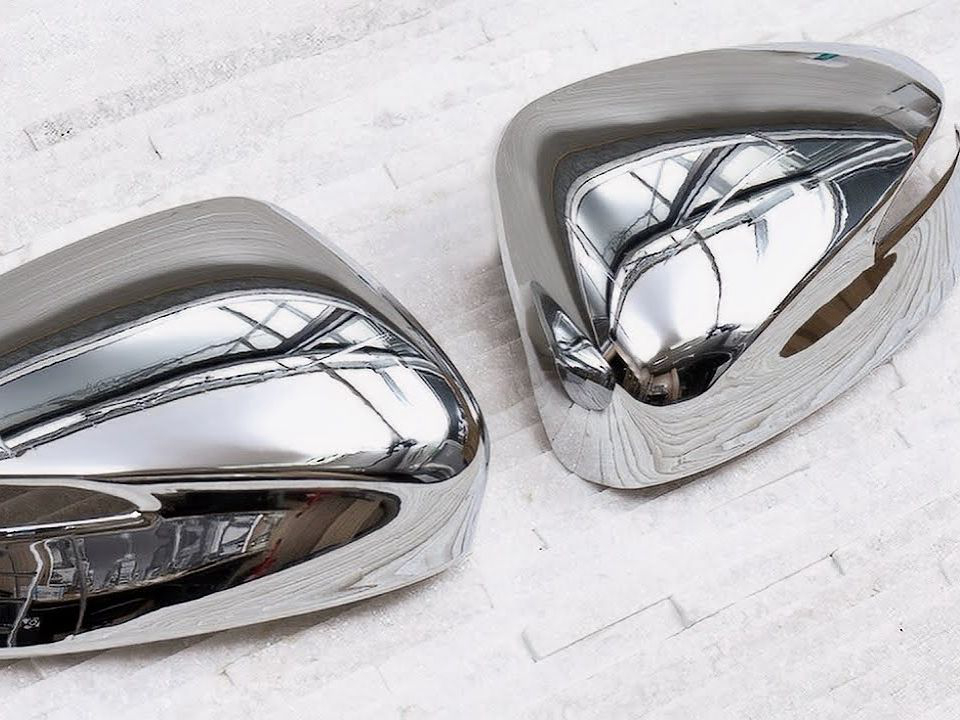Chrome Plating: Adding Shine and Durability to Custom Parts
Introduction
Chrome plating is an electrochemical surface treatment widely recognized for providing exceptional aesthetic brilliance and substantial durability to metal components. Electroplating deposits a thin chromium layer onto a substrate, significantly enhancing its appearance, corrosion resistance, hardness, and wear resistance. Chrome plating is used extensively for decorative and functional applications across diverse industries.
The global demand for chrome plating continues to rise due to the increasing emphasis on appearance, durability, and corrosion protection in the automotive, consumer electronics, aerospace, and industrial machinery industries. Its unique aesthetic appeal and improved surface durability make chrome plating a preferred choice for custom parts requiring premium finishes and long-lasting performance.
Chrome Plating Process Overview
Key Steps in Pretreatment
Thorough cleaning and degreasing of components
Surface preparation, including polishing and buffing
Application of copper and/or nickel underlayers for optimal adhesion and corrosion resistance
Comparison of Core Technologies (using tables)
Technology | Process Method | Typical Thickness | Typical Applications | Efficiency |
|---|---|---|---|---|
Decorative Chrome | Electroplating with nickel/copper underlayer | 0.5–2 µm decorative chromium layer | Automotive trims, consumer products, decorative hardware | High |
Hard Chrome (Industrial) | High-thickness electroplating | 10–250 µm heavy-duty chromium layer | Hydraulic components, industrial tools, wear-resistant parts | Moderate-High |
Trivalent Chrome | Environmentally-friendly electroplating | 0.3–1 µm chromium layer | Automotive, consumer electronics components | Moderate |
Post-processing and Optimization
Final polishing and buffing for optimal aesthetic finish
Rigorous inspection for surface uniformity and defect-free quality
Application of protective sealants (optional for enhanced corrosion protection)
Chrome Plating: Advantages and Limitations
Brief Introduction: Chrome plating significantly improves the aesthetics, corrosion resistance, and wear durability of metal surfaces. However, the process demands precise control, and environmental considerations related to hexavalent chromium require careful management or alternatives.
Property | Advantage / Limitation | Remarks and Typical Values |
|---|---|---|
Aesthetic Quality | Outstanding mirror-like finish | Reflectivity >70%, smooth, bright appearance |
Corrosion Resistance | Highly effective when properly applied | Salt Spray (ASTM B117): Typically >1000 hrs with nickel underlayer |
Surface Hardness | Significantly enhanced (Hard Chrome) | Hardness up to 70 HRC is achievable |
Wear Resistance | Exceptional improvement | Wear resistance increased significantly (up to 200%) |
Environmental Impact | Limitations (hexavalent chromium issues) | Adoption of trivalent chrome reduces impact significantly |
Maintenance | Easy maintenance | Surface cleans easily, retains finish quality with basic care |
Industrial Applications of Chrome Plating
Examples include:
Automotive Industry Chrome plating enhances automotive trim components and bumpers, providing exceptional aesthetic appeal and superior corrosion protection (corrosion resistance increased by up to 90%).
Consumer Electronics For consumer electronics, chrome plating offers a premium appearance, scratch resistance, and a highly reflective surface for premium product finishes.
Industrial Machinery Industrial components, such as hydraulic pistons and shafts, utilize hard chrome plating to significantly improve wear resistance and lifespan (wear resistance enhanced by over 100%).
Aerospace Sector Aerospace components benefit from chrome plating due to improved surface hardness, corrosion protection, and enhanced operational reliability (surface durability improved by 50–70%).
Chrome Plating Process Selection Guide
Material Adaptability Matrix
Substrate Type | Manufacturing Process | Recommended Chrome Plating Process | Performance Gain Focus |
|---|---|---|---|
Decorative Chrome | Superior aesthetics, corrosion protection | ||
Hard Chrome | Exceptional wear resistance, corrosion resistance | ||
Decorative or Trivalent Chrome | Enhanced visual appeal, moderate corrosion resistance | ||
Decorative Chrome | High aesthetic quality, improved surface durability |
Key Criteria for Evaluating Chrome Plating Suppliers
Equipment Capability: Evaluate plating bath size, capability for thickness control, and availability of trivalent chrome systems for environmental compliance.
Process Certification: Verify adherence to standards (ISO 1456, ASTM B456, and RoHS compliance) to ensure high-quality and environmentally friendly plating practices.
Test Reports: Require corrosion resistance tests (ASTM B117), hardness measurements, and surface finish quality documentation.
Surface Treatment Technology Classification Matrix
Technology | Main Function (Specific & Comprehensive) | Key Features | Advantages |
|---|---|---|---|
Aesthetic enhancement, corrosion protection, hardness improvement | Thickness: Decorative (0.5–2 µm), Hard (10–250 µm), Salt Spray: >1000 hrs achievable | Outstanding visual appeal, exceptional durability | |
Corrosion resistance, aesthetic matte finish | Thickness: 0.5–2 µm, moderate corrosion protection | Minimal dimensional impact, matte black finish | |
Surface smoothing, deburring, corrosion resistance | Surface roughness Ra <0.2 µm achievable | Ultra-smooth finish, excellent cleanliness | |
Aesthetic enhancement, surface imperfection masking | Roughness: Ra 0.2–2.0 µm | Attractive appearance, improved fingerprint resistance |
Technical Suitability Assessment (Chrome Plating-Specific)
Four-Dimensional Assessment Model:
Material Compatibility: Compatible with a wide range of metals, including steel, aluminum, brass, copper, and stainless steel, subject to appropriate pre-treatment.
Performance Requirements: Offers superior aesthetic quality, exceptional corrosion resistance (ASTM B117 >1000 hrs achievable), and significantly enhanced wear resistance and surface hardness.
Process Economics: Higher upfront investment with significant returns in component durability, reduced maintenance, and premium product appeal.
Environmental and Safety Impact: Requires stringent management of plating chemicals; adopting trivalent chrome significantly reduces ecological risks, ensuring compliance with EPA and OSHA standards.
FAQ (Frequently Asked Questions):
What is the difference between decorative and hard chrome plating?
Can chrome plating be applied to aluminum parts?
How durable is chrome plating in harsh environments?
What environmental considerations exist for chrome plating?
Does chrome plating affect component dimensions?

